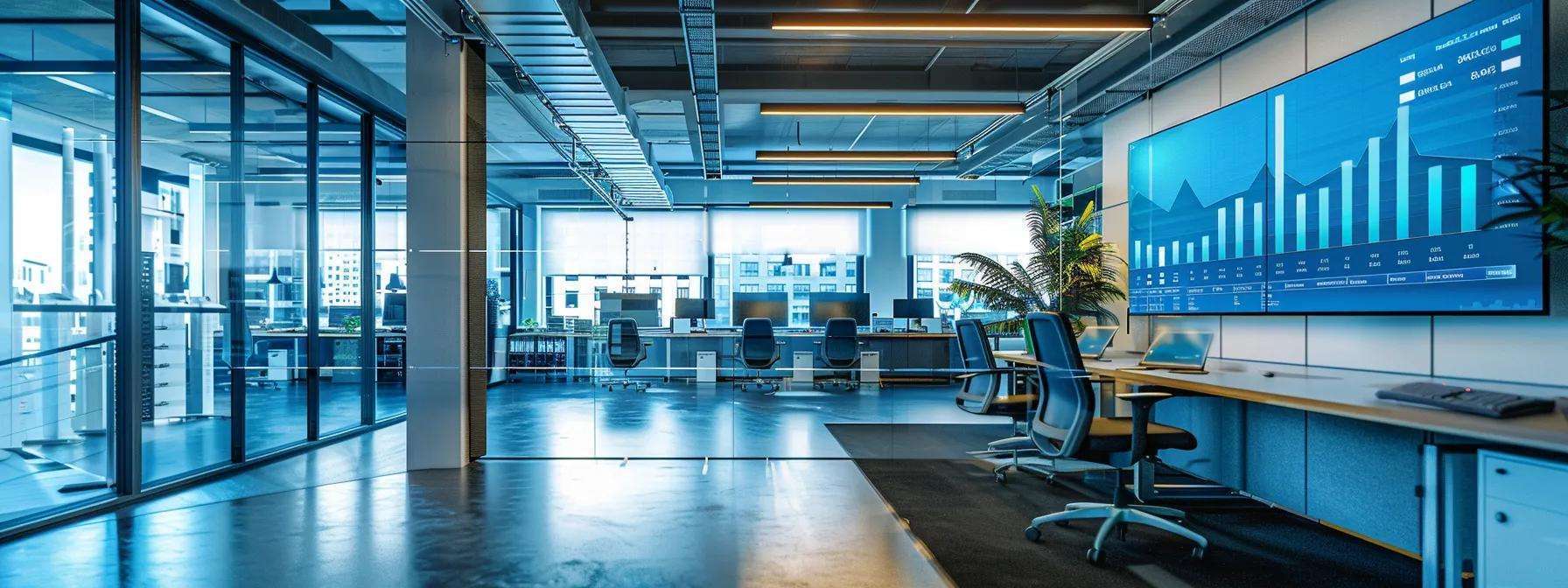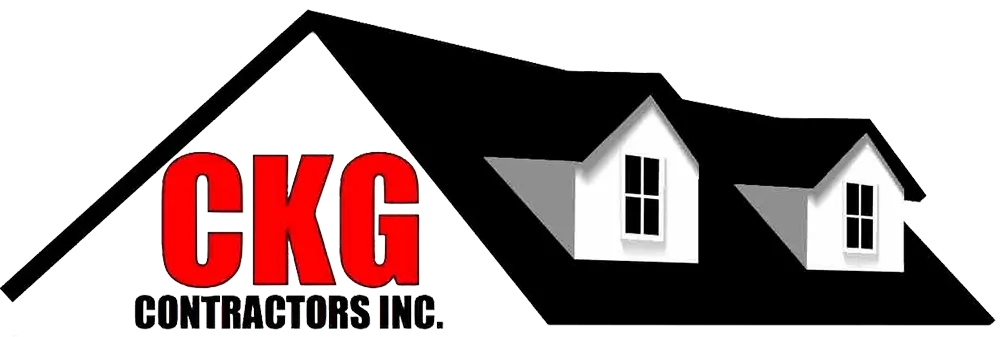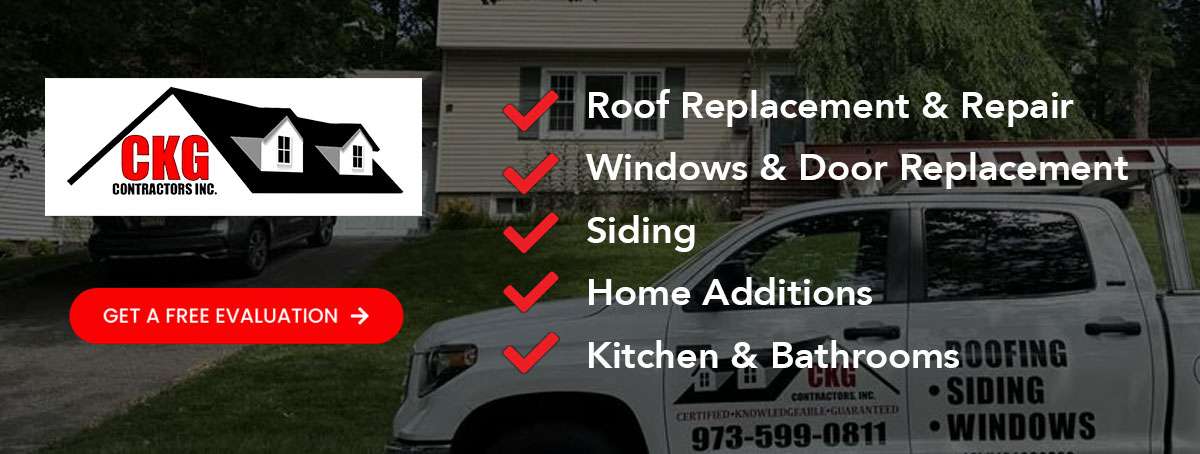Table Of Contents:
- How Technology Is Changing the Role of a Commercial Roofing Contractor
- What Technologies Are Revolutionizing Commercial Roofing Contractors?
- How Does Technology Improve Efficiency and Accuracy in Commercial Roofing?
- How Is Technology Enhancing Customer Experience for Commercial Roofing Services?
- What Impact Does Technology Have on Sustainability in Commercial Roofing?
- How Are Commercial Roofing Contractors Adapting to Technological Changes?
- What Are the Future Trends in Technology for Commercial Roofing Contractors?
- How Can Commercial Property Owners Benefit From Technology-Driven Roofing Services?
- Tables and Lists
- Frequently Asked Questions
How Technology Is Changing the Role of a Commercial Roofing Contractor
In today’s fast‐paced business environment, commercial roofing contractors are undergoing a significant transformation driven by technological advancement. Traditionally, roofing contractors relied on manual inspections, rigid project management routines, and limited communication channels. However, modern digital tools and innovative equipment such as drones, advanced imaging technology, project management software, and automated tracking systems are reshaping the industry. Many contractors are now integrating storm damage repair strategies into their service offerings to address unexpected weather-related challenges. This evolution streamlines operations, optimizes repair responses, enhances customer experience, and promotes sustainable roofing practices.
The convergence of various technological systems enables contractors to perform roof inspections with greater accuracy, optimize project schedules, reduce repair response times, and maintain roofs over the long term. These improvements are crucial in an industry where even minor leaks or unnoticed deterioration can lead to significant financial loss or safety hazards. By integrating these new technologies, contractors can deliver faster estimates, provide detailed reporting, and engage in strategic roof management. This article explores how technology improves operational efficiency and accuracy, revolutionizes customer communication, boosts sustainability efforts, and shapes future trends for commercial roofing contractors.
For example, drones can complete roof inspections in a fraction of the time required by traditional methods and deliver high-resolution imagery that offers an in-depth view of potential damage. Advanced imaging and data analytics further allow contractors to predict maintenance needs before minor issues escalate into major repairs. Meanwhile, digital project management systems offer real-time tracking of budgets, progress, and resource allocation, ensuring that roofing projects are completed within set timelines and financial constraints. Through this integration of innovation and technology, commercial roofing contractors are transforming their work and setting higher industry standards.
This transformation benefits commercial property owners who increasingly demand transparency, sustainability, and reliability from their roofing contractors. As we break down the ways technology is revolutionizing commercial roofing, the discussion is organized into thematic sections addressing enhanced inspections, streamlined communication, sustainability, future trends, and more.
What Technologies Are Revolutionizing Commercial Roofing Contractors?
Technology has introduced groundbreaking improvements in commercial roofing. By harnessing advanced tools, contractors achieve higher precision during inspections, project management, budgeting, and client communication. The key technologies include drones, advanced imaging equipment, project management software, and digital communication platforms—all designed to maximize efficiency and minimize errors. With real-time data acquisition and cloud-based collaboration, contractors can markedly reduce turnaround times and improve the accuracy of maintenance reports.
How Are Drones Enhancing Roof Inspections and Assessments?
Drones offer a rapid and accurate alternative to labor-intensive manual inspections. By flying over and around a commercial roof, these unmanned aerial vehicles capture high-resolution images and video footage used to identify issues such as leaks, cracks, or misaligned roof elements that might be missed from the ground. Their ability to quickly survey large areas enhances risk assessment, ensures precise damage mapping, and supports predictive maintenance planning. Drone inspections reduce the need for personnel on steep or hazardous structures and, in many cases, have cut inspection times by over 50%, thereby decreasing downtime and expediting repair processes. When integrated with advanced analytics software, drone data enables 3D roof modeling, offering a comprehensive view of current conditions and facilitating proactive measures to prevent costly future repairs.
What Role Does Advanced Imaging Play in Roofing Analysis?
Advanced imaging technologies—including infrared thermography and high-definition scanners—are critical for identifying issues that might go unnoticed. Infrared cameras detect subtle temperature variations on a roof’s surface, indicating moisture presence, insulation defects, or impending leaks. This technology is particularly useful in rapidly changing weather conditions as it provides a real-time map of thermal anomalies that affect roof integrity. Paired with artificial intelligence, high-definition imaging assesses wear patterns and material degradation over time. The resulting data aids in creating detailed maintenance reports and supports insurance claims by documenting pre-existing conditions with precision. Enhanced imaging capabilities allow contractors to develop targeted maintenance strategies and precise repair plans, ensuring durability and optimal performance while boosting safety and energy efficiency.
How Is Project Management Software Improving Roofing Projects?
Project management software has redefined roofing project planning and execution. Digital platforms offer centralized dashboards where contractors manage tasks, track progress, allocate resources, and monitor budgets in real time. By integrating scheduling, procurement, and team collaboration features, these systems eliminate communication breakdowns and administrative delays common in traditional roofing projects. Automatic timeline adjustments and resource allocation based on real-time inputs minimize downtime and cost overruns. The ability to generate instant, comprehensive reports helps contractors provide transparent updates to clients, building trust and satisfaction. Some platforms even incorporate predictive analytics using historical data to forecast potential pitfalls, ensuring maintenance and repair projects run smoothly and within budget.
Which Digital Communication Tools Streamline Contractor-Client Interaction?
Digital communication tools such as mobile apps, video conferencing, and cloud-based document repositories have streamlined interactions between roofing contractors and their clients. These tools enable real-time updates and quick issue resolution, ensuring project milestones and deadlines are met. Dedicated digital portals allow clients to access live project metrics, download inspection reports, and communicate directly with project teams. Additionally, features like push notifications keep stakeholders informed about scheduling changes, budget updates, or emergency repairs. By replacing slower traditional methods such as phone calls or paper documentation, these platforms facilitate a responsive, customer-focused approach. The resulting transparency increases client satisfaction and minimizes misunderstandings throughout the project.
How Does Technology Improve Efficiency and Accuracy in Commercial Roofing?

Technological innovations have significantly boosted the operational efficiency and accuracy of commercial roofing projects. Digital tools and data analytics help contractors reduce errors, optimize resource usage, and expedite maintenance and repair processes. The integration of data-driven systems minimizes downtime and improves overall outcomes, ensuring that roofs function effectively in the short term and remain durable in the long term.
In What Ways Do Data-Driven Insights Optimize Roof Maintenance?
Data-driven insights enable contractors to shift from reactive repairs to proactive maintenance. Sensors embedded in roofing materials and smart devices continuously collect data on temperature fluctuations, moisture levels, and structural movements. By analyzing this data with sophisticated algorithms, contractors can predict potential failure areas before issues become critical. This proactive approach improves roof longevity and reduces the frequency of unplanned emergency repairs. For instance, a system detecting increased moisture from early sealant breakdowns can trigger preventive maintenance measures. Data-driven decision-making not only enhances roof durability but also leads to significant cost savings by reducing extensive repair work or full roof replacements. Benchmarking current conditions against historical data creates a continuous improvement loop that refines maintenance strategies based on empirical evidence—a competitive advantage in the commercial roofing industry.
How Do Automated Tracking Systems Accelerate Repair Response?
Automated tracking systems speed up repair responses by ensuring every maintenance request and repair task is logged, assigned, and monitored in real time. These systems automatically generate work orders from sensor data or client reports and assign them to the nearest available repair team. Digital notifications and tracking dashboards alert contractors immediately to potential issues, enabling rapid mobilization of repair crews. This automation minimizes human error in scheduling and ensures prompt, well-coordinated repair responses. Feedback loops tracking repair times and post-repair performance allow contractors to continuously improve service delivery, ultimately leading to enhanced customer satisfaction and minimized project disruption.
What Are the Benefits of Real-Time Budget and Progress Tracking?
Real-time tracking tools offer a comprehensive view of budgets and project progress, ensuring that roofing projects stay on schedule and within financial limits. Digital dashboards consolidate labor costs, material procurement, timelines, and progress milestones into one interface, enabling early identification of potential budget overruns or delays. With real-time insights, contractors can adjust schedules and reallocate resources efficiently. Additionally, improved accountability through documented expenses and tasks assists in future planning, audits, and dispute resolution. Detailed progress metrics throughout every project phase—from initial surveys to final inspections—help reduce disruptions and cost overruns while reinforcing client confidence through transparent project management.
How Is Technology Enhancing Customer Experience for Commercial Roofing Services?
The modern commercial roofing sector increasingly emphasizes customer experience by leveraging technology for greater transparency, efficiency, and communication. Digital solutions enable seamless interactions between contractors and clients, reducing uncertainty during project execution and increasing satisfaction with timely, precise reporting. These technologies not only improve operational efficiency but also foster trust and collaboration among all parties involved.
How Do Digital Tools Increase Transparency in Roofing Projects?
Cloud-based project management systems and contractor-client portals have raised transparency in the roofing industry. By centralizing project data and progress updates on accessible online dashboards, clients can monitor job status, budget consumption, and milestone achievements in real time. This immediate access to information empowers clients to make informed decisions and reduces misunderstandings regarding timelines and costs. Moreover, detailed documentation of every project change creates an auditable trail useful for performance reviews or insurance claims. Digital signatures and electronic document management ensure that communications are reliably recorded and easily retrievable, fostering accountability and confidence throughout the process.
What Communication Channels Are Most Effective for Client Updates?
Effective communication channels are vital during roofing projects to keep clients informed and engaged. Email, SMS notifications, and dedicated project portals consistently rank highly for conveying real-time updates. Video conferencing and live chat offer face-to-face interactions and prompt issue resolution. Many contractors now use custom mobile applications that push notifications for each milestone, ensuring clients receive instantaneous, clear, and unbiased information. This multi-channel approach not only boosts efficiency but also enriches the overall customer experience by keeping clients active participants in project management.
How Does Technology Support Better Documentation and Reporting?
Advanced digital document management systems enable contractors to capture and store high-resolution images, inspection reports, and maintenance records in centralized databases accessible by both contractors and clients. Automated report generation converts real-time data into comprehensive progress, material usage, and cost reports. Easily shared records substantiate warranty claims, facilitate insurance processes, and ensure compliance with industry regulations. Moreover, comparing historical data with current metrics through advanced reporting tools helps predict future maintenance needs and identify recurring issues. This improved documentation enhances both internal project management and client transparency while reducing administrative overhead.
What Impact Does Technology Have on Sustainability in Commercial Roofing?

Sustainability drives many technological innovations in construction and roofing. Commercial roofing contractors are increasingly adopting eco-friendly practices and energy-efficient solutions through digital tools and smart materials. Technology not only supports the selection of greener products but also optimizes processes to minimize waste and energy use, reflecting the understanding that long-term environmental and financial benefits go hand in hand.
How Are Energy-Efficient Roofing Systems Selected Using Technology?
Modern roofing contractors use sophisticated energy simulation and analysis software to choose the most appropriate energy-efficient roofing systems for commercial properties. This technology evaluates variables such as climate data, insulation properties, and reflective materials to predict roof performance over time. With these insights, contractors select roofs that lower energy consumption while enhancing building sustainability. Thermal imaging and computerized modeling compare various materials based on solar reflectance and thermal emissivity, ensuring that every system is optimized for energy conservation. When paired with green certifications, these analyses contribute to lower energy bills and a reduced carbon footprint.
What Role Does Technology Play in Promoting Sustainable Roofing Practices?
Technology promotes sustainable roofing by enabling continuous monitoring and preventive maintenance of roof structures. Sensors within roofing materials detect moisture, thermal changes, and other parameters that suggest declining energy efficiency. This real-time data helps schedule timely maintenance, ensuring that energy-efficient systems continue to perform optimally. Digital tools also assist in waste reduction by accurately predicting material quantities, thus minimizing surplus that might end up in landfills. Building Information Modeling (BIM) software allows contractors to simulate entire roofing assemblies—from insulation to surface finishes—to ensure all components work together for optimal thermal performance and durability. These advances support adherence to green building standards while delivering cost savings over time.
How Do Smart Roofing Materials Integrate With Modern Technologies?
Smart roofing materials are designed to automatically regulate temperature, self-repair, or generate renewable energy. These materials may include photovoltaic cells, phase change components, or self-healing polymers that adapt to environmental conditions. When integrated with digital monitoring systems, smart materials continuously provide feedback on performance and environmental impact. For example, solar-integrated panels can generate electricity and work with energy management systems to balance a building’s overall consumption. Coupled with sensor networks, these materials allow remote monitoring of roof performance, timely detection of malfunctions, and scheduled maintenance. As they become more widespread, both contractors and property owners benefit from improved energy efficiency, enhanced structural longevity, and a reduced environmental footprint.
How Are Commercial Roofing Contractors Adapting to Technological Changes?
The rapid pace of technological advancement requires commercial roofing contractors to adapt quickly. To remain competitive, established firms are investing in training and infrastructure upgrades. Modern contractors are not only acquiring new tools but also reshaping operational strategies to leverage digital data and smart analytics. Adapting to technological changes means rethinking traditional workflows and embracing continuous learning to keep pace with evolving tools and methodologies. Contractors now recognize that long-term success depends on seamlessly integrating technology into every aspect of their business—from on-site inspections to customer engagement and post-project maintenance.
What New Skills Do Roofing Contractors Need in a Tech-Driven Industry?
Roofing contractors must acquire new technical and analytical skills to thrive in a digital era. These include operating drone-inspection systems, utilizing advanced imaging tools, and managing sophisticated project management software. Familiarity with data analytics and cloud-based communication platforms is increasingly essential, as contractors analyze large datasets from smart sensors to inform predictive maintenance and resource allocation. Beyond technical skills, effective communication and digital literacy are critical for explaining complex technical data to clients in clear, accessible terms. Continuous education programs, certifications in new technologies, and on-the-job training help equip roofing professionals with the expertise needed to manage modern systems, ensuring improved service quality, enhanced safety, and competitive advantage.
How Is Technology Changing Project Management Roles in Roofing?
The role of project management in commercial roofing has evolved as technology has permeated every phase of a project. Traditional project managers now use digital scheduling tools, real-time dashboards, and automated reporting systems. These advancements facilitate a dynamic and responsive management approach, enabling adjustments of timelines, forecasting of risks, and precise cost monitoring. Enhanced digital tools allow managers to oversee multiple projects simultaneously while maintaining detail and transparency. This evolution has also led to new roles that blend technical knowledge with traditional management skills, such as data analytics specialists who help interpret sensor data and optimize workflows. Overall, technology is redefining project management by improving decision-making, reducing delays, and ensuring projects meet quality and safety standards within budget.
What Challenges Do Contractors Face When Implementing New Technologies?
Despite the many benefits, contractors face challenges when adopting new technologies. High initial capital investments for advanced equipment and software can pose barriers, especially for smaller companies. The steep learning curve and extensive training required for teams further complicate transitions. Resistance to change from long-standing employees and disruptions to established workflows can also hinder implementation. Additionally, ensuring data security, integrating new systems with legacy tools, and achieving interoperability among multiple digital systems are significant concerns. Nevertheless, many contractors find that long-term reductions in operational costs, improved safety, and enhanced efficiency justify these investments, ultimately positioning them as industry leaders capable of superior outcomes.
What Are the Future Trends in Technology for Commercial Roofing Contractors?

The horizon for technology in commercial roofing holds promising innovations that will further revolutionize the industry. Future trends point to an increased role for artificial intelligence (AI), machine learning, and the Internet of Things (IoT) to enhance every facet of roofing projects. These technologies are expected not only to streamline current processes but also to open new avenues for efficiency, sustainability, and enhanced customer engagement. As contractors move toward digital fluency, they will likely create interconnected workspaces that bridge on-site execution with remote oversight, leading to significant improvements in cost savings, project performance, and overall satisfaction for commercial property owners.
How Will Artificial Intelligence Transform Roofing Inspections and Maintenance?
Artificial intelligence is set to become a cornerstone of future commercial roofing. AI algorithms can analyze extensive datasets from drone imagery, sensor networks, and maintenance records to identify patterns indicating wear, damage, or potential failure. By automating data analysis, AI speeds up inspections while enhancing accuracy and reducing human error. Predictive maintenance models powered by AI enable contractors to schedule repairs before minor issues evolve into major problems, thereby prolonging roof life and lowering repair costs. Additionally, AI-powered diagnostic reports provide clear, actionable insights that support strategic decision-making and resource allocation, reinforcing the long-term benefits of proactive roof maintenance.
What Emerging Technologies Could Further Change Roofing Roles?
Beyond AI, several emerging technologies will likely disrupt the roofing industry further. Augmented reality (AR) enables contractors to overlay digital information on physical roofs during inspections, improving measurement precision and decision making. Blockchain technology may secure digital records of inspections and repairs, creating tamper-proof histories that support warranty claims and insurance processes. Nanotechnology is anticipated to introduce smart coatings that self-heal minor damages and enhance thermal performance, contributing to sustainability. When combined with IoT sensors, these materials can continuously communicate roof conditions to centralized management systems, shifting contractor roles from reactive repair to proactive, data-driven asset management.
How Can Contractors Prepare for Upcoming Technological Advances?
To prepare for future technological advances, roofing contractors must strategically invest in training, equipment, and digital infrastructure. Prioritizing continuous education for the workforce on advanced tools such as drones, AI software, and IoT devices is essential. Collaborating with technology providers and industry partners to pilot new solutions and gather performance data can also be beneficial. Establishing robust digital protocols and cybersecurity measures will safeguard sensitive data during the transition. Contractors who allocate budgets for technological upgrades and foster a culture of innovation will be better positioned to secure a competitive edge. Staying informed about industry trends through professional associations, webinars, and research publications will further aid in forecasting and adapting to new technologies.
How Can Commercial Property Owners Benefit From Technology-Driven Roofing Services?
Commercial property owners are reaping the advantages of technology-driven roofing services. The adoption of digital solutions by roofing contractors results in improved service efficiency, better communication, and lower overall costs. Enhanced transparency and proactive maintenance lead to fewer emergency repairs and extend roof lifespans, which in turn improve asset performance and yield long-term savings for property owners.
What Should Property Owners Expect From Tech-Enabled Roofing Contractors?
Property owners can expect a high standard of precision and efficiency from tech-enabled roofing contractors. From drone inspections to real-time progress tracking through project management software, every step of the roofing process is marked by enhanced transparency and accountability. Contractors provide detailed digital reports outlining findings, repair estimates, and maintenance advice, enabling owners to make proactive decisions. The integration of smart materials and advanced imaging reduces the risk of undetected damage and minimizes maintenance disruptions—resulting in lower costs, improved safety, and increased trust in the contractor’s ability to deliver a durable, well-maintained roof.
How Does Technology Improve Long-Term Roof Performance and Cost Savings?
By incorporating advanced technologies, roofing contractors can extend the useful life of commercial roofs and reduce long-term expenses. Digital monitoring and predictive maintenance systems help identify issues before they escalate, minimizing unscheduled repairs and emergency interventions. This proactive strategy preserves a roof’s structural integrity, reduces downtime, and supports efficient budgeting and resource allocation. In addition, energy-efficient roofing materials and smart coatings contribute to lower utility costs by improving insulation and temperature regulation. Overall, technology offers a comprehensive approach to roof management that translates into measurable cost savings and superior long-term performance.
How Can Facility Managers Leverage Technology for Better Roof Management?
Facility managers have access to sophisticated digital tools that simplify roof management and optimize maintenance planning. Advanced software systems provide centralized platforms to track repair histories, monitor material performance, and schedule periodic inspections. IoT devices embedded in roofing systems offer continuous updates on environmental conditions and structural health, enabling facility managers to accurately forecast maintenance needs. These tools also facilitate seamless communication among property owners, roofing contractors, and maintenance teams, ensuring quick responses to emerging issues. Leveraging such technology leads to reduced operational costs, a lower risk of unexpected failures, and enhanced overall asset management, helping facility managers develop strategic maintenance plans that extend roof life and improve workplace safety.
Tables and Lists
Below are tables and lists that summarize key technologies and their benefits in commercial roofing.
Table 1: Key Technologies in Commercial Roofing
Table 2: Comparison of Project Management Tools
Table 3: Benefits of Smart Roofing Materials
Additionally, here is a detailed list of key technological advancements:
- Drones – Revolutionizing Aerial Roof Inspections Drones capture high-resolution imagery from multiple angles, enhancing safety by reducing the need for risky climbs, and support proactive maintenance strategies through integration with AI analytics.
- Advanced Imaging – Uncovering Hidden Roof Anomalies Using infrared thermography and high-definition scanning, this technology reveals moisture buildup and insulation deficiencies, enabling early detection of issues that may otherwise go unnoticed.
- Project Management Software – Centralized and Responsive Coordination These platforms consolidate scheduling, budgeting, and progress tracking into a single dashboard, streamlining communication, automating work orders, and reducing delays through real-time decision making.
- Digital Communication Tools – Enhancing Transparency and Client Engagement Modern communication platforms provide real-time notifications, cloud-accessible document repositories, and integrated messaging to keep every stakeholder updated throughout the project lifecycle.
- IoT Sensors – Continuous Monitoring for Proactive Maintenance Integrated sensor systems supply continuous data on temperature, moisture, and structural shifts, enabling predictive maintenance and extending roof lifespans.
- Automated Tracking Systems – Accelerating Repair Workflow Automated workflows promptly assign repair tasks based on sensor alerts or client reports, minimizing human error and ensuring repair accountability.
- Smart Roofing Materials – Innovative, Self-Maintaining Solutions Emerging materials like photovoltaic panels and self-healing coatings improve energy efficiency and reduce maintenance costs by automatically addressing minor defects, while seamless integration with digital monitoring ensures optimal performance.
Frequently Asked Questions
Q: How do drones improve the safety and accuracy of roof inspections? A: Drones allow contractors to inspect roofs without physical risk by capturing high-quality images and videos from multiple angles. Paired with advanced imaging and AI analytics, they help identify issues such as leaks or structural weaknesses that might be missed during manual inspections, thereby enhancing safety and diagnostic accuracy.
Q: What measurable benefits do advanced imaging technologies provide in commercial roofing? A: Advanced imaging technologies like infrared thermography detect moisture infiltration, insulation failures, and thermal anomalies with high precision. This early intervention reduces the need for expensive repairs and improves energy efficiency, potentially lowering unexpected roof failure rates and extending roof lifespan.
Q: How does project management software contribute to cost savings in roofing projects? A: By centralizing scheduling, budgeting, and progress tracking, project management software enables real-time oversight and adjustments. This streamlines communication, reduces material waste and labor inefficiencies, and allows early detection of potential cost overruns, all leading to significant overall cost savings.
Q: In what ways do digital communication tools enhance client satisfaction during a roofing project? A: Digital communication tools, including dedicated client portals, push notifications, and cloud-based document sharing, ensure clients receive timely, accurate updates about their project’s progress. This real-time transparency fosters trust and reduces misunderstandings, leading to smoother project execution and stronger long-term relationships.
Q: What future technological trends should commercial roofing contractors prepare for? A: Future trends include expanded use of artificial intelligence for predictive maintenance, augmented reality for on-site inspections, blockchain for secure documentation, and nanotechnology-enhanced materials that offer self-healing and improved energy efficiency. Contractors should invest in continuous training and digital infrastructure upgrades to incorporate these emerging technologies and stay competitive.




